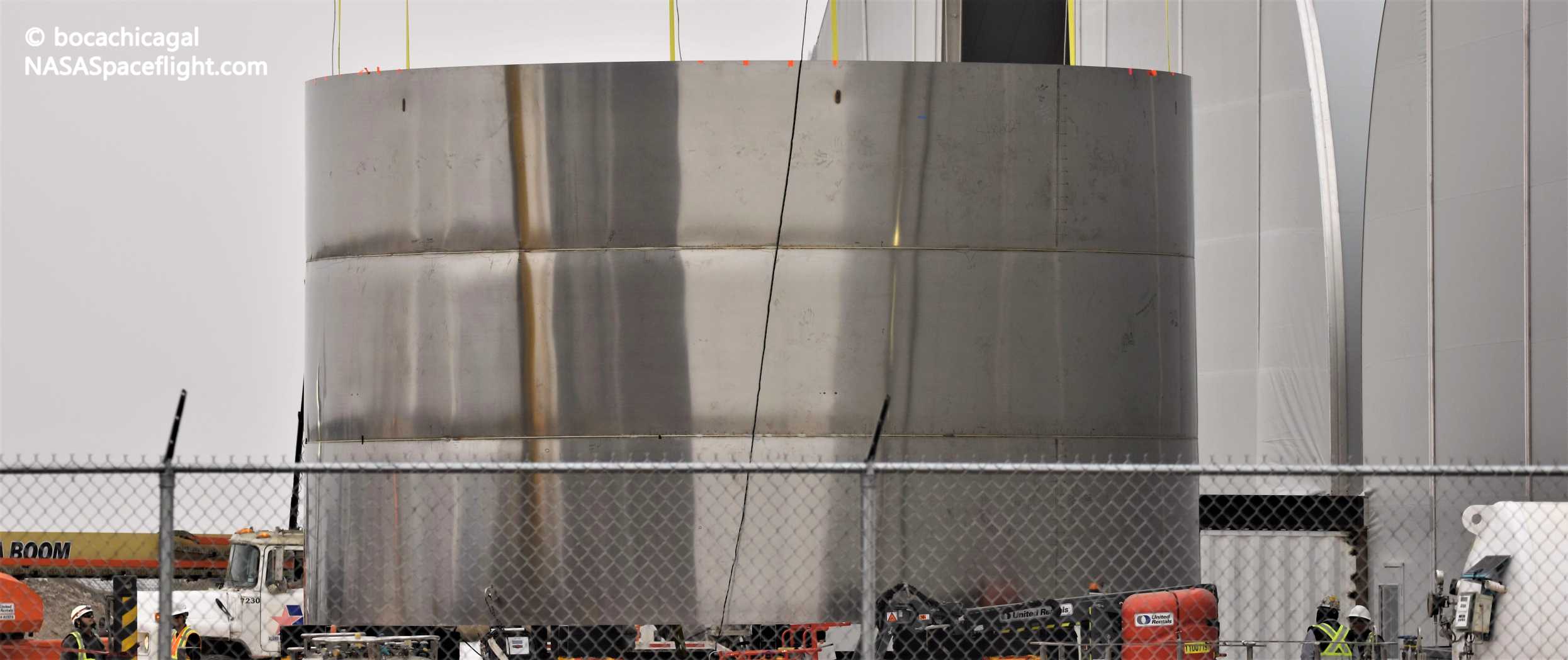
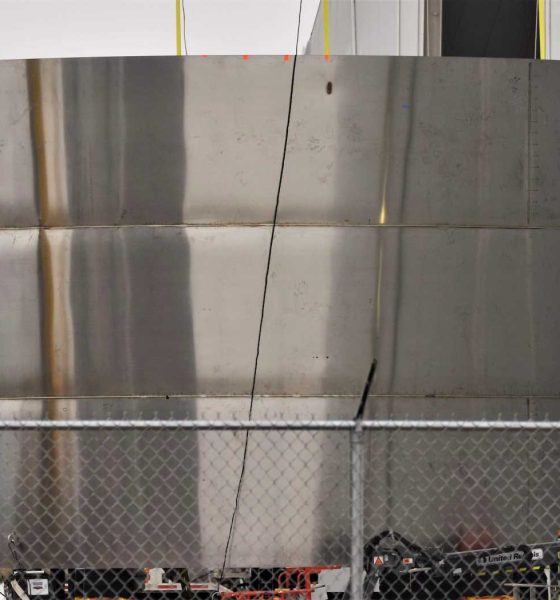
News
SpaceX Starship factory eyes cutting-edge industry solutions for inspiration [updated]
Update: In a Twitter response to this article, SpaceX CEO Elon Musk says that the reality of things is unsurprisingly a bit more complex. As noted, the standards and requirements for aerospace hardware are much stricter than those needed for the water towers, storage tanks, and other utilities that existing commercial solutions are commonly used to build.
As such, it’s inaccurate to suggest that those off-the-shelf solutions are capable of building rockets right out of the box. Still, several pieces of commercial fabrication equipment from providers like IMCAR have been spotted in use at SpaceX’s Boca Chica, Texas Starship facilities. With “substantial capital and engineering” investments into making those solutions more precise, however, SpaceX may still be able to use existing hardware – or at least the concepts they underly – to rapidly build high-quality Starships and Super Heavy boosters.
A SpaceX engineer says that the company wants to adopt commercially-available manufacturing equipment that could allow its Boca Chica, Texas team to build Starship tank parts in minutes and nearly-complete rocket bodies in a matter of days.
Originally created to meet the needs of a variety of different companies – typically oil and gas related – that need efficient, affordable, and standardized storage tanks, a small but growing niche exists for semi-automated tank production. While there is some clear uncertainty given that the quality and consistency required for oil and gas needs or even simple water storage likely isn’t the same needed to meet strict spaceflight margins, SpaceX has already acquired several production tools from existing contractors and is working around the clock to prove that those same tools can be used to build large, reusable rockets.
The gamble is simple: if it turns out that off-the-shelf (COTS) equipment can become an almost turnkey solution for manufacturing high-quality Starship spacecraft and Super Heavy boosters, SpaceX may have found a shortcut to orbit, avoiding the huge expense of finding and building its own custom production solutions. But is that COTS tank fabrication hardware truly up to the task?

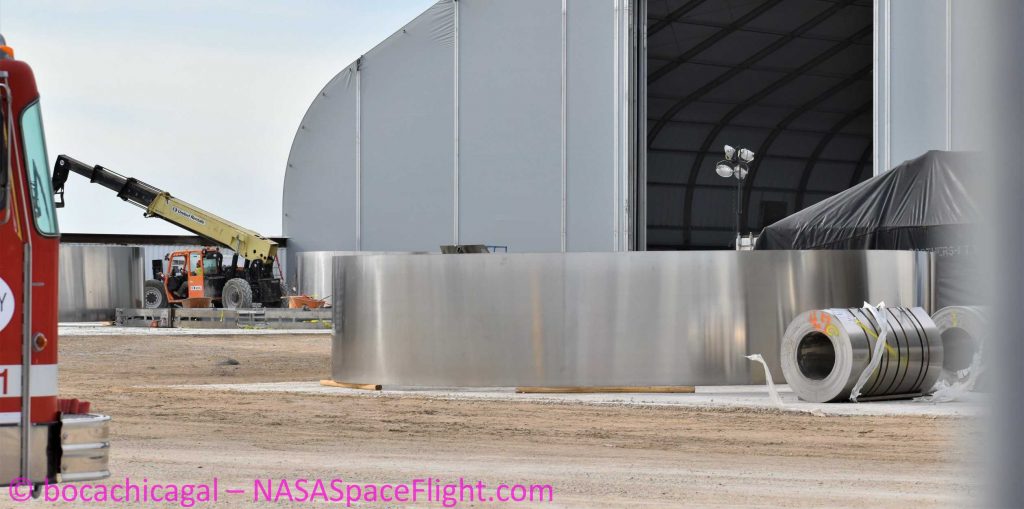
At least right now, the simple answer is “yes”. Thanks to two highly successful destructive tests of Starship tank prototypes that wrapped up last month, SpaceX has confirmed that at least a subset of the available COTS solutions can be used to build Starships (theoretically) capable of orbital flight. To be clear, those tanks reached only the most basic kind of specification needed for a true orbital-class spacecraft, demonstrating that they can fairly easily survive the pressures required for Starship and its Super Heavy boosters to remain structurally sound from liftoff to touchdown.
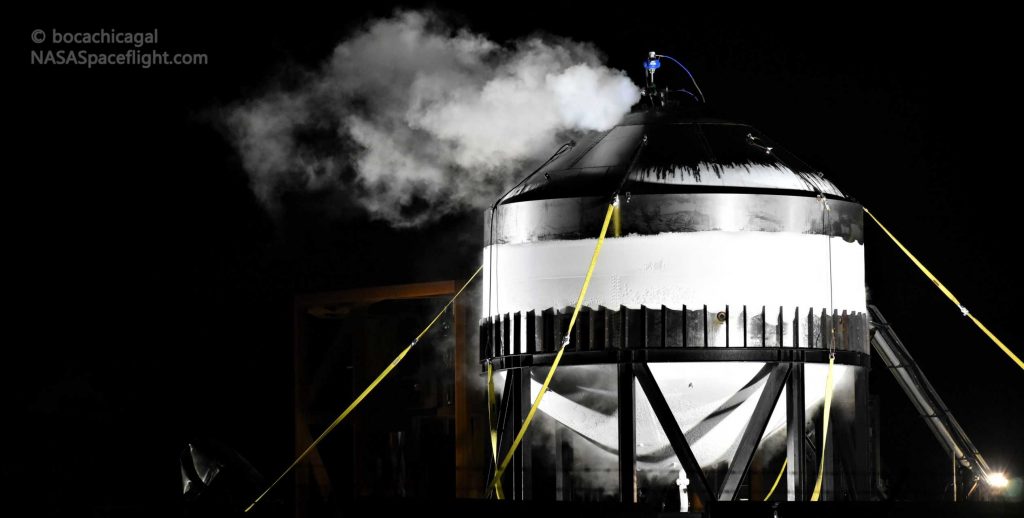
For the most part, the only truly COTS aspect of those test tanks were the flat, cylindrical rings at their center – produced by cutting and welding together giant sheets of coiled steel. The tanks’ domes were more or less welded together by hand with the help of large jigs, while finished domes and rings were also welded together by hand. Given that the welds used to create the rings themselves have never obviously been a problem, the success of Starship’s two test tanks can thus be heavily attributed to skilled welders’ hands rather than any particular off-the-shelf solution.
Still, the fact of the matter is that automatic solutions like those currently available exist for good reason – aside from requiring far less labor to produce similar results, the consistency and quality of those results can actually be much better than anything that can be reliably achieved in a more boutique fashion. This is, at least, the promise of solutions like those shown below.
SpaceX certainly appears to be pursuing the best-case scenarios that could be made possible with some of the hardware shown above. Already, it looks like Starship ring segments – themselves formed and welded with semi-automated IMCAR hardware – are being stacked and tack welded (temporary welds used like clamps) inside one of SpaceX’s new tents before the stand holding those ring(s) rotates itself, automatically welding them together.
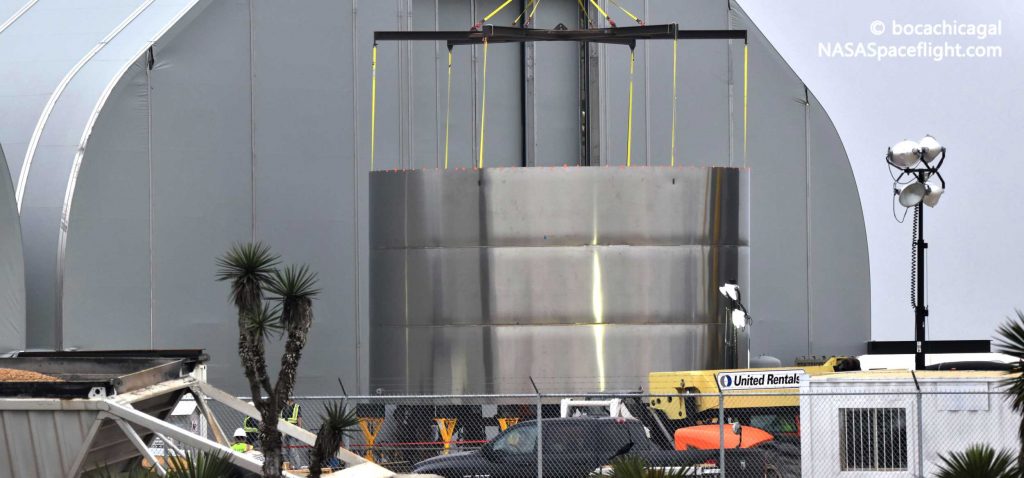
The three mated rings pictured above were assembled over the course of several days using some of those methods and COTS fabrication hardware. However, if SpaceX can refine its procedures – currently still in the oven, so to speak – and become an expert at modifying and using available tank fabrication hardware to fabricate rockets, the company could conceivably build entire Starship and Super Heavy bodies in a matter of days.
It might take a substantial amount of trial and error, but SpaceX is clearly well on its way.
Check out Teslarati’s Marketplace! We offer Tesla accessories, including for the Tesla Cybertruck and Tesla Model 3.

Investor's Corner
Tesla releases Q4 and FY 2025 vehicle delivery and production report
Deliveries stood at 406,585 Model 3/Y and 11,642 other models, for a total of 418,227 vehicles.
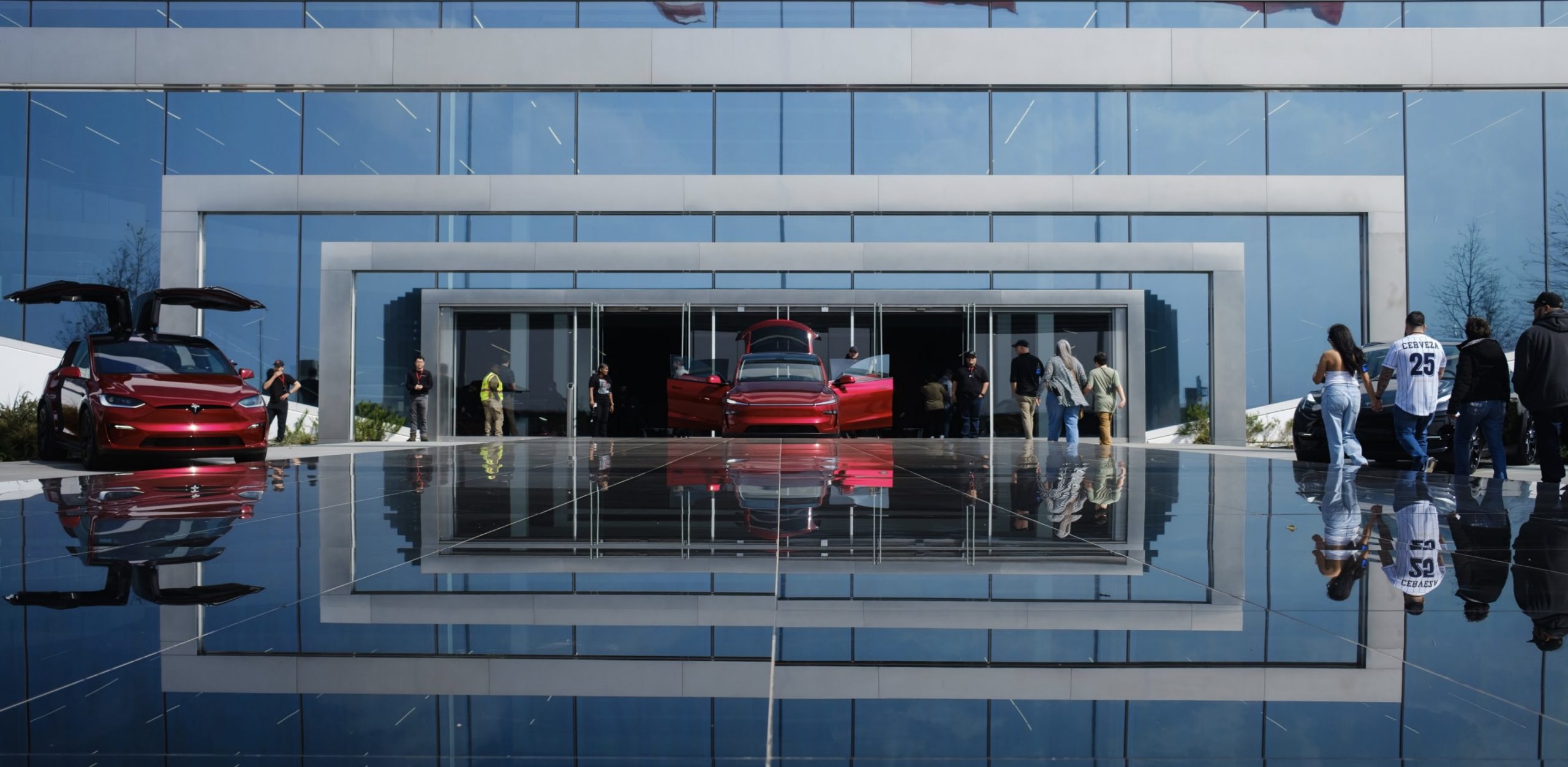
Tesla (NASDAQ:TSLA) has reported its Q4 2025 production and deliveries, with 418,227 vehicles delivered and 434,358 produced worldwide. Energy storage deployments hit a quarterly record at 14.2 GWh.
Tesla’s Q4 and FY 2025 results were posted on Friday, January 2, 2026.
Q4 2025 production and deliveries
In Q4 2025, Tesla produced 422,652 Model 3/Y units and 11,706 other models, which are comprised of the Model S, Model X, and the Cybertruck, for a total of 434,358 vehicles. Deliveries stood at 406,585 Model 3/Y and 11,642 other models, for a total of 418,227 vehicles.
Energy deployments reached 14.2 GWh, a new record. Similar to other reports, Tesla posted a company thanked customers, employees, suppliers, shareholders, and supporters for its fourth quarter results.
In comparison, analysts included in Tesla’s company-compiled consensus estimate that Tesla would deliver 422,850 vehicles and deploy 13.4 GWh of battery storage systems in Q4 2025.
Tesla’s Full Year 2025 results
For the full year, Tesla produced a total of 1,654,667 vehicles, comprised of 1,600,767 Model Y/3 and 53,900 other models. Tesla also delivered 1,636,129 vehicles in FY 2025, comprised of 1,585,279 Model Y/3 and 50,850 other models. Energy deployments totaled 46.7 GWh over the year.
In comparison, analysts included in Tesla’s company-compiled consensus expected the company to deliver a total of 1,640,752 vehicles for full year 2025. Analysts also expected Tesla’s energy division to deploy a total of 45.9 GWh during the year.
Tesla will post its financial results for the fourth quarter of 2025 after market close on Wednesday, January 28, 2026. The company’s Q4 and FY 2025 earnings call is expected to be held on the same day at 4:30 p.m. Central Time.
Elon Musk
Starlink achieves major milestones in 2025 progress report
Starlink wrapped up 2025 with impressive growth, adding more than 4.6 million new active customers and expanding service to 35 additional countries, territories, and markets.

Starlink wrapped up 2025 with impressive growth, adding more than 4.6 million new active customers and expanding service to 35 additional countries, territories, and markets. The company also completed deployment of its first-generation Direct to Cell constellation, launching over 650 satellites in just 18 months to enable cellular connectivity.
SpaceX highlighted Starlink’s impressive 2025 progress in an extensive report.
Key achievements from Starlink’s 2025 Progress
Starlink connected over 4.6 million new customers with high-speed internet while bringing service to 35 more regions worldwide in 2025. Starlink is now connecting 9.2 million people worldwide. The service achieved this just weeks after hitting its 8 million customer milestone.
Starlink is now available in 155 markets, including areas that are unreachable by traditional ISPs. As per SpaceX, Starlink has also provided over 21 million airline passengers and 20 million cruise passengers with reliable high-speed internet connectivity during their travels.
Starlink Direct to Cell
Starlink’s Direct to Cell constellation, more than 650 satellites strong, has already connected over 12 million people at least once, marking a breakthrough in global mobile coverage.
Starlink Direct to Cell is currently rolled out to 22 countries and 6 continents, with over 6 million monthly customers. Starlink Direct to Cell also has 27 MNO partners to date.
“This year, SpaceX completed deployment of the first generation of the Starlink Direct to Cell constellation, with more than 650 satellites launched to low-Earth orbit in just 18 months. Starlink Direct to Cell has connected more than 12 million people, and counting, at least once, providing life-saving connectivity when people need it most,” SpaceX wrote.
News
Tesla Giga Nevada celebrates production of 6 millionth drive unit
To celebrate the milestone, the Giga Nevada team gathered for a celebratory group photo.
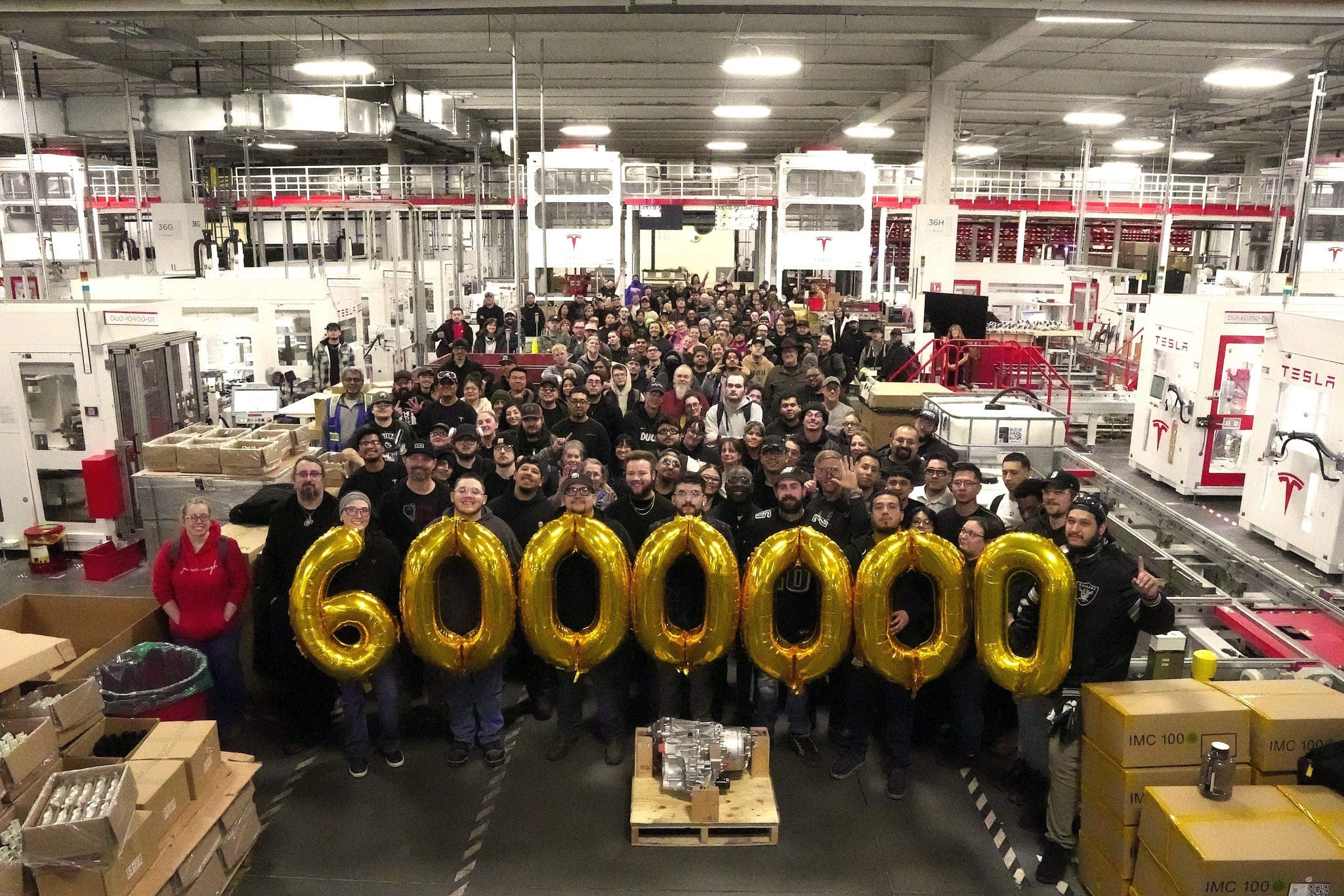
Tesla’s Giga Nevada has reached an impressive milestone, producing its 6 millionth drive unit as 2925 came to a close.
To celebrate the milestone, the Giga Nevada team gathered for a celebratory group photo.
6 million drive units
The achievement was shared by the official Tesla Manufacturing account on social media platform X. “Congratulations to the Giga Nevada team for producing their 6 millionth Drive Unit!” Tesla wrote.
The photo showed numerous factory workers assembled on the production floor, proudly holding golden balloons that spelled out “6000000″ in front of drive unit assembly stations. Elon Musk gave credit to the Giga Nevada team, writing, “Congrats on 6M drive units!” in a post on X.
Giga Nevada’s essential role
Giga Nevada produces drive units, battery packs, and energy products. The facility has been a cornerstone of Tesla’s scaling since opening, and it was the crucial facility that ultimately enabled Tesla to ramp the Model 3 and Model Y. Even today, it serves as Tesla’s core hub for battery and drivetrain components for vehicles that are produced in the United States.
Giga Nevada is expected to support Tesla’s ambitious 2026 targets, including the launch of vehicles like the Tesla Semi and the Cybercab. Tesla will have a very busy 2026, and based on Giga Nevada’s activities so far, it appears that the facility will be equally busy as well.








